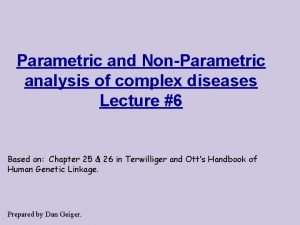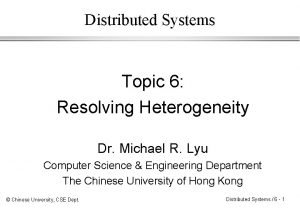Length scale of heterogeneity Length scale of heterogeneity






- Slides: 6

Length scale of heterogeneity • Length scale of heterogeneity after 4 Ga of convection • Sampling the pudding • Lateral variations in composition; fastest way is the calculation of bulk moduli benchmarked to low-pressure experiments, and then relate them to seismic velocity • Partial melting systematics • SLIMER – sublithospheric isotope and major element research: mantle xenolith analyses along MOR • Need paired trace elements/major elements • Seismology is not going to solve this problem but will be limited to the wave physics, e. g. 2% at 100 km resolution • Use P and S to try and get to T and X

Upper mantle • Test hypothesis for the dramatic increase in viscosity in the upper mantle (H 20) • Need seismic and rheological observations of where water is or isn’t in the mantle • Partial melting systematics • Use huge array to combine receiver function studies, surface waves, body waves, and array seismology might have to wait until we see USArray in place • Is the presence of water limited to this realm? • Seafloor flattening with respect to half space cooling; not a solved problem

Slabs • Avalanches and phase changes at 660 km • P-T-V-X equations of state, in the presence of water • How much of the lithospheric mantle is being serpentinized in subduction zones; this is key to the water budget in the Earth • Geodynamicists need to give us temperature anomalies for subduction zones; this is a simple example of how a forward model can be used as a prediction for seismology; but we need real input, not tell them what they should find in the first place • Anisotropy is one parameter whose resolution will improve • Deep earthquakes: make faults in plastic regime, by water or phase transitions? Who knows?

Hot spots/upwellings/plumes • Shape and distribution of swells • Mechanisms and geodynamic predictions and tests • Pressure and temperature derivatives of the effects of melt, water and mineral interaction • Effects of volatiles and map their 3 D deformation • Look at geochemical signals of core-mantle interaction • Match geochemistry with tomography source depth • Mapping of all relevant elastic parameters • Seismic tests for hypothetical structures

Lower Mantle • • • Heat distribution and heat flow Determine heat capacity and thermal conductivity Effects of volatiles and map their 3 D deformation Consistency between geochemistry systems Trace evolution of convection, something we can only get from geochemistry • What is the triple point of perovskite? • Statistical tests and properties of the heterogeneity • Is the presence of water possible here?

Water • What is the water budget of the Earth? How much can continents hold before they dehydrate; how much goes down in subduction zones and how much comes up in ridges and plumes? • Mineral physics can tell you how much it might hold by solving the solubility problem, but we need to know the bulk values to do proper accounting











